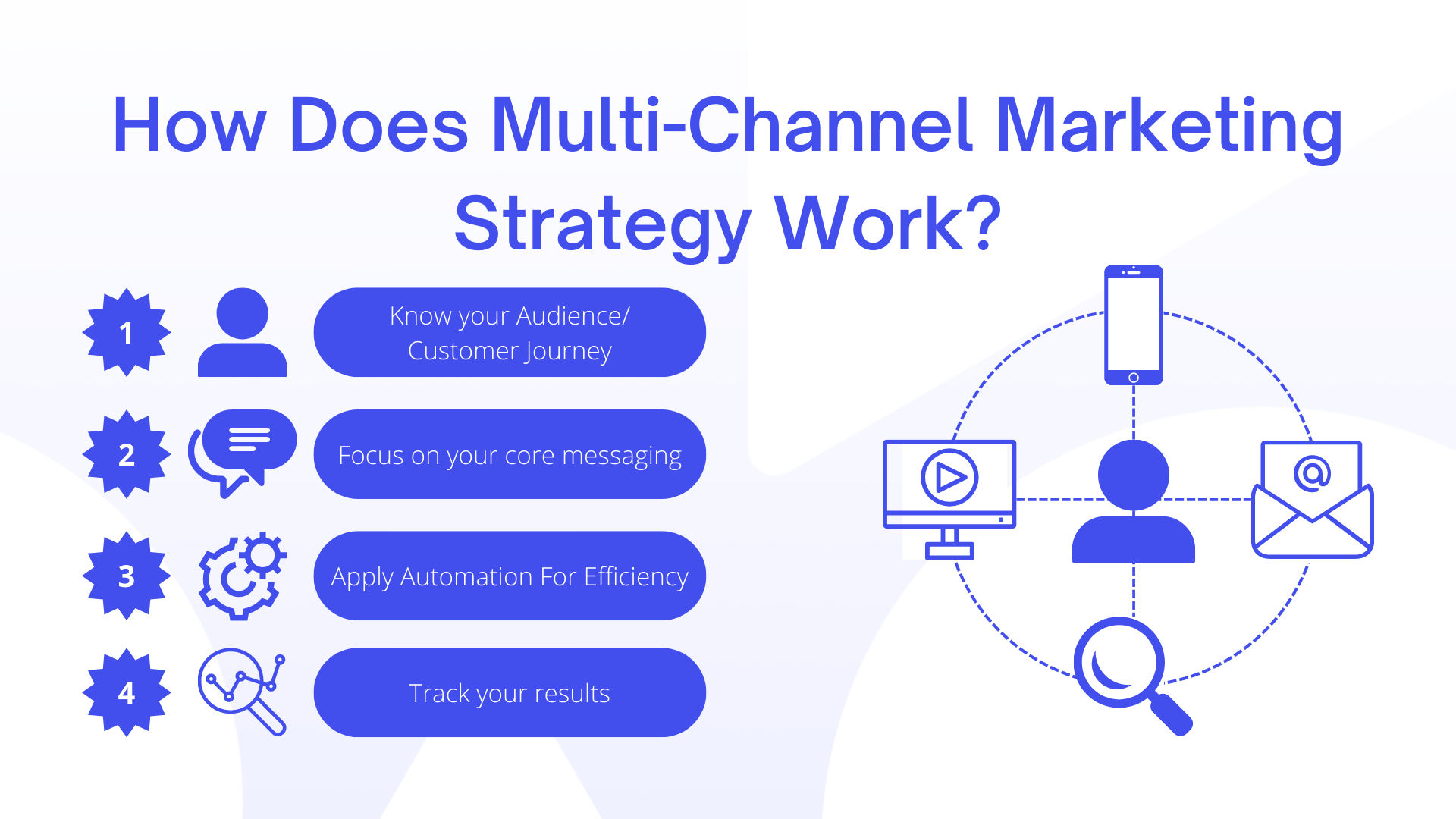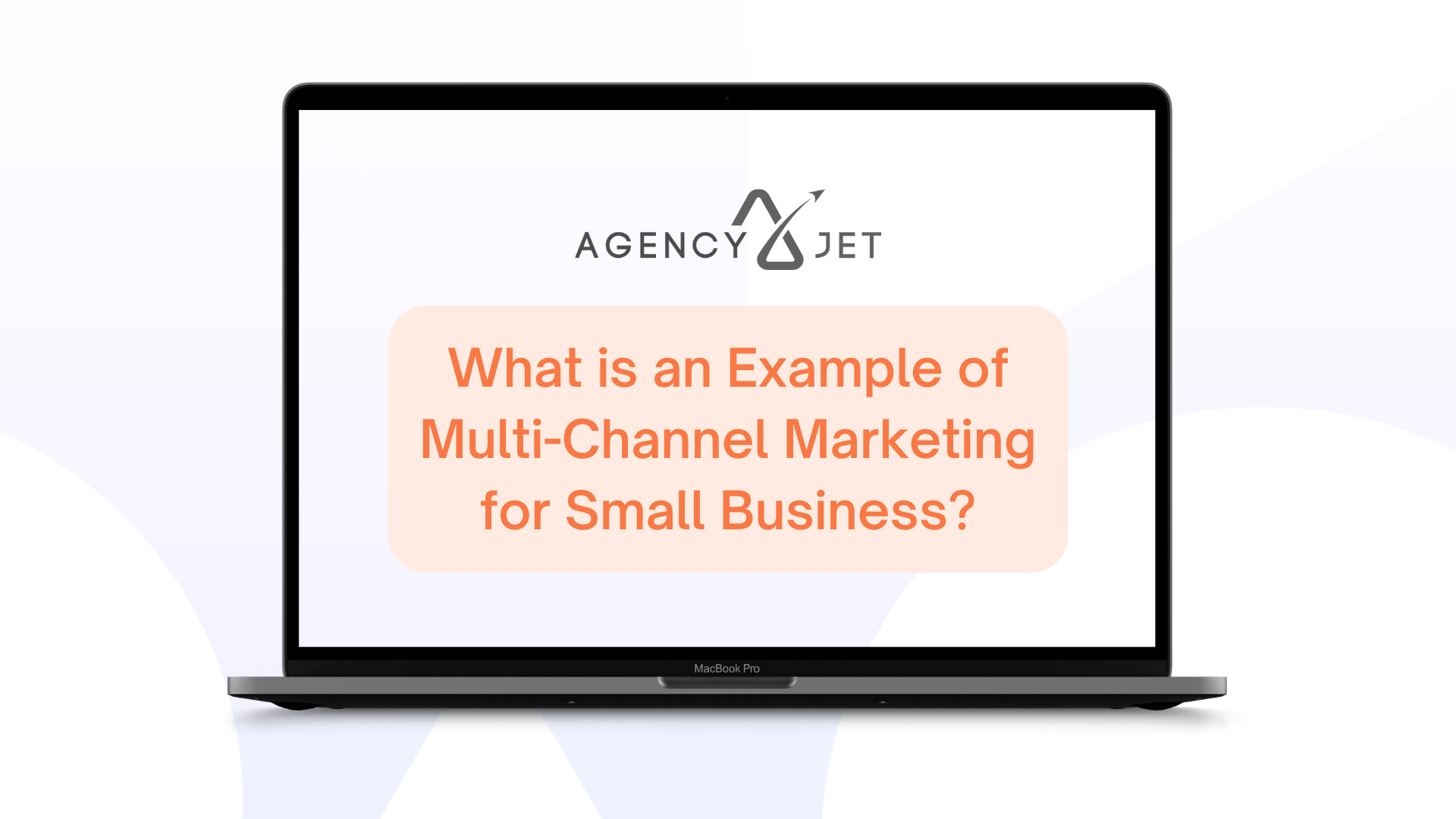GUIDE: Recession Proof Marketing 101
If were to subtitle this blog, it'd be this:
Don’t Let Fear Hold You Back: The Danger of Not Investing in Marketing During a Recession
When times are tight, it’s only natural for entrepreneurs to want to reduce spending on marketing.
Some may think that it’s just too risky to put resources into something that might not work.
However, cutting your marketing spending during a recession can be a huge mistake.
You don't need to be like this.
Businesses that fail to invest in marketing during economic downturns often fail.
As consumers cut back on their spending and rivalry heats up, companies need every advantage they can get.
They’ll have a difficult time engaging with their audience and may even get lost in the crowd if they don’t have a solid marketing strategy in place.
Investing in marketing, with a focus on multi-channel strategies, data and analytics, and cost-effective techniques like SEO services and cold outreach, can help small businesses weather the storm of a recession and come out stronger on the other side.
The Power of Multi-Channel Marketing
With multi-channel marketing, several promotional and distribution channels are combined into one cohesive strategy to win over more clients.
Email, postal mail, a website, social media, online banner ads, and physical stores are all examples of possible channels.

To accommodate consumers’ varying preferences, marketers often employ multiple promotional channels.
For instance, a company may have an online store open while also selling the same products at a physical location. One study suggests that customers who use multiple channels are willing to spend anywhere from two to five times as much as those who use only one, which is why multi-channel marketing has been recognized by marketers for years.
Consumers have dozens of media touchpoints per day.
Rather than sitting back and hoping customers stumble across their brand, marketers should investigate which channels their target audience frequents most. When businesses enhance their marketing campaigns to include other channels, they reach more of their ideal customers.
At first glance, multi-channel marketing might seem tricky. A multi-channel strategy is a campaign that uses more than one channel to reach its goal.
Since there are so many ways to advertise in the marketing world today, some do multi-channel marketing without even thinking about it. In 2019, marketers typically utilized 7.2 promotional channels, with social media, digital advertising, mobile marketing, and web marketing being among the most common options.
Promoting a hashtag on television, sending push alerts to a mobile device, or including a tracking URL in an email are all examples of multi-channel marketing techniques. The best multi-channel marketing strategies, on the other hand, go into detail and make use of data to optimize the performance of each channel.
An example of a company that was able to thrive despite a recession thanks to effective multi-channel marketing is Warby Parker. The brand saw a huge gap in the industry and met it by selling trendy glasses at reasonable prices on the Internet. It was responsive to clients’ needs and was present where its target audience was most likely to be.
Leveraging Data and Analytics for Efficient Spend
Making wise marketing investments is crucial in an economic downturn. With the help of data and analytics, you can keep tabs on how each promotional channel is doing, determine which ones are most effective, then implement any necessary adjustments to your overall strategy. You can use this to assess which of your campaigns are delivering the best outcomes. By doing so, you also avoid possible risks.
Rather than throwing cash at marketing efforts in the hopes that some of them will stick, it’s possible to choose which channels and strategies are more likely to be successful.
For instance, a SaaS tax management platform TaxJar found that it was losing money on larger customers after analyzing their transaction data. The platform’s subscription fee was tiny in comparison to the enormous sums of money it was saving clients on manual tax processes. They fixed it by introducing tiered pricing and custom plans for businesses, with the latter primarily dependent on the volume of transactions made each month. As a result, their income tripled in just one year.
Affordable and Effective Marketing Techniques
During a recession, marketing becomes even more critical. However, it’s only natural to ask how to create lead-generating campaigns in such a scenario. Here are some low-cost marketing tactics that can help you weather the storm:
Implementing SEO Strategies Will Set Your Content Apart
With search engine optimization (SEO), you can make sure your content appears near the top of search engine results pages (SERPs) when potential customers conduct online searches using Google or Bing. Here are some SEO best practices that can help you rise in the search engine rankings:
- Improve your content’s visibility and authority with high-quality backlinks.
- Ensure the content you publish positions you as a leader in your field.
- Publish content that’s relevant to search terms and answers the user’s query.
- Make your pages easier to find and navigate with internal links.
- Create site-wide subject matter expertise to boost the credibility of your work.
- Resolve any technical difficulties that prevent your site from being easily crawled, discovered, or indexed.
Although this marketing strategy can be complicated, SEO services can help small businesses rank higher at a reasonable cost.
During difficult economic times, you need all the help you can get. Here's a handy guide to get you competing with big business fast.
Keep Your Audience Engaged With Email Marketing
Email marketing allows you to communicate directly with both existing and prospective customers. This keeps your company and its offerings at the forefront of consumers’ minds and in their inboxes. In addition, emails offer another chance to boost web traffic and generate interest in other lead-nurturing content without spending a lot of money.
One of the most effective methods to get leads for your business without breaking the bank is through cold email outreach. With this technique, you will reach out to potential clients with whom you have never interacted through a “cold email” or a personalized message designed to spark conversation and jumpstart a connection.
Once you’ve established a relationship, it’s much simpler to cultivate leads that respond to cold emails and eventually turn them into paying customers. Email campaign management aims to achieve just that.
Not sure how to get started? You don't even have to. ChatGPT can do it for you. Here's how to launch a successful email campaign in minutes.
Publish Evergreen Content Covering the Whole Buying Process
The secret to producing outstanding content is making sure it’s useful for readers at any point in the customer journey. It needs to guide the reader through a marketing funnel while simultaneously covering the whole buyer’s experience. Use standalone, evergreen pieces of content that explain a problem, suggest a solution, and ultimately persuade a prospect to sign up for your service or buy your product. Begin with content aimed at influencing buying decisions.
A quick chat on evergreen content from Agency Jet.
Build Partnerships in Your Field
It’s beneficial to form strategic partnerships with companies that offer products or services that complement your own. By working closely with partners like vendors, suppliers, and even competitors, businesses can boost customer loyalty and word-of-mouth.
Optimizing Conversion Rates
If you want to convert more visitors into paying customers, you need to make sure your website is set up to achieve that. You can increase conversions by including calls to action, contact buttons, and submission forms in your content.
Take Advantage of Video Marketing
Video marketing offers numerous exciting advantages for small businesses. By combining visuals with audio, video is a very effective medium that can keep viewers’ attention for considerably longer than just text or still images.
Also, it excels at breaking down intimidating concepts into manageable chunks. That’s why it’s so effective at drawing in new customers and expanding your business’s reach. According to 68% of marketers, video outperforms Google Ads in terms of return on investment (ROI). You’ll be able to grow your company, add new services, and hire more people, thanks to the substantial ROI.
Benefit From Social Media
The advent of social media has made it possible for businesses to connect with a much wider audience and cultivate connections with prospective customers. Companies can interact with their target market, fostering brand loyalty and trust, thanks to social media. You can raise brand exposure quickly and affordably by posting relevant content on social networks such as Facebook, Instagram, Twitter, and LinkedIn.
The Risks of Cutting Marketing Budgets
When times are tough, business owners have to cut corners wherever they can, and marketing is often one of the first things to go because, relative to things like salaries, it is seen as a luxury.
It might seem like marketing won’t be a good investment when compared to other expenses. However, the truth is that it should be among the primary strategies that remain and are employed by businesses to weather the storm.
Although lowering marketing costs is a frequent response to economic downturns, it is widely recognized as being largely ineffective down the road, leaving businesses to play catch-up for a longer time.
If your competitors are holding onto their budget during economic uncertainty, that's an opportunity to beat them. Full stop.
Even a whole century ago, Harvard alum Roland Vaile monitored the growth of 250 major American corporations between the end of WWI and the Great Depression of the 1920s and his research showed that businesses with larger marketing spending saw a 20% boost in sales even as the economy was in a downturn. Conversely, sales fell 7% for companies that cut their marketing budgets compared to before the recession.
According to recent studies conducted by Nielsen, companies that take the path of cutting their marketing budget risk losing 2% of their long-term revenue. And considering that marketing accounts for anything from 10% to 35% of a brand’s equity, trying to recover from such drastic reductions can take anywhere from three to five years.
Consider the case of Reckitt Benckiser. It started an ad campaign to convince people to keep buying its more expensive items after the market crashed in 2008. They increased their marketing spending by 25%, as well. The outcome was an increase of 8% in sales and an increase of 14% in earnings, even as the profitability of similar businesses fell by 10%.
Another example is Samsung. The economic downturn in 2008 presented an opportunity for the company’s rebranding efforts. While its rivals scaled back on advertising, Samsung doubled down, shifting its image to that of an innovative technology leader. Their strategy was successful. While it was placed at no. 21 in worldwide brand value before the recession of 2008, Samsung has risen to no. 6 since. Some companies struggle during recessions, while others see them as opportunities.
Conversely, a well-known UK beverage company had a consistent market share but decided to forego investment in Region B for a year while maintaining its focus on Region A. This decision led to a loss of market share of 2% in Region B and continued stability in Region A during the recession. In practice, most media spending primarily serves to maintain existing market share instead of expanding it.
However, although marketing spending resumed the following year, it was not enough to make up for the previous year’s losses in market share. The company’s long-term prospects took a significant hit.
The takeaway is crystal clear: Gains and losses in the short term can have far-reaching consequences, and neglecting marketing can have devastating results for a company’s future earning capacity.
Insert "your competitors" instead of "market" for this video. The principle of going against the grain is exactly the mentality successful business owners have when it comes to marketing in poor economic times.
Case Studies: Small Businesses That Thrived With Strategic Marketing
Some forms of digital marketing are particularly fruitful in recessions due to their ability to target a specific audience with a high degree of efficiency and creativity. The promotional video for Dollar Shave Club is one such case. The video’s viral success came in 2012, right at the heart of a global economic downturn.
Even if the video wasn’t the only factor in the company’s success, it played a significant role. It has been viewed more than 28 million times since it first went live. Within the first 48 hours after the video’s release, over 12,000 people had signed up for the company’s subscription service. The video’s wit and tone are equally impressive in that they make it stand out from the crowd. Their strategy was extremely successful considering the video was made for only around $4,500.
Later, Dollar Shave Club reported hundreds of millions in sales. The brand was then purchased by Unilever, a major European corporation, for $1 billion. With a clever and cost-effective marketing strategy, Dollar Shave Club was able to achieve what many bigger companies couldn’t at a much lower cost. This is why video marketing is poised to be among the most lucrative techniques in the coming decade. Moreover, it’s a relatively affordable method of maintaining a steady stream of income even if economic conditions worsen.
If you haven't seen this yet, have you been under a rock? One video from an obscure company turned into a $1 billion acquisition in the long term. And it was released when times were tough.
River Pools & Spas, a Virginia-based small business, is another company that survived and thrived during the recession of 2008. After the market collapsed, the company feared it was over. However, they rethought their business model, developed more cost-effective packages, and adjusted their processes accordingly. They also started marketing online and focused on digital customers, which helped them become the well-known pool company that they are today.
Del Monte Foods was also able to weather the economic downturn of 2008 by increasing its advertising budget under the leadership of its Chief Marketing Officer, Bill Pearce. Marketing spend was used toward memorable, customer-centric advertising efforts, which helped the company’s bottom line by $48.5 million in Q1 2009 alone.
Conclusion
Marketing is the driving force behind revenue, customer retention, and referrals.
Although reducing marketing expenditures during an economic slump may yield short-term savings, its long-term effects will be felt across the business.
Any company that wants to succeed in these financially tumultuous times must have a marketing strategy that can withstand the effects of a recession.
While resources may be limited, maintaining customer relationships and generating new business opportunities is still possible with the right mix of techniques.
To stay afloat in tough times without compromising the long-term potential for growth, businesses should use recession-proof marketing strategies such as keeping tabs on data and analytics, taking advantage of multiple channels to reach a broader audience, and providing content that rings true with consumers. Small businesses should prioritize marketing as a critical tool for surviving and thriving during economic downturns.
And getting marketing advice should be free
We don't charge you to teach you something. We only do that to get you results.
Here's a 100% free and guided consultation that our clients have called "the best 90 minutes in marketing."
We're not sure if that's true, but we tend to agree.


